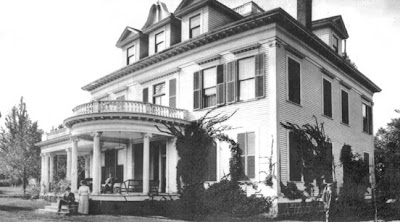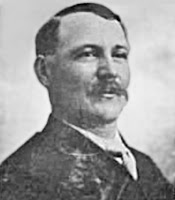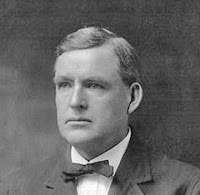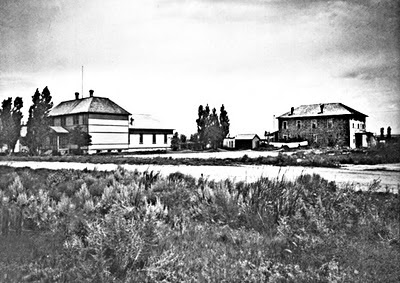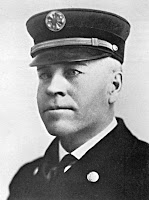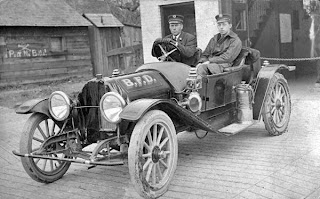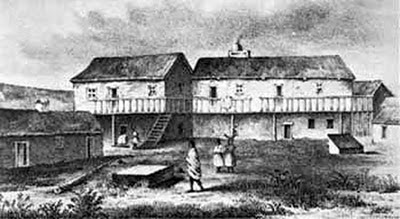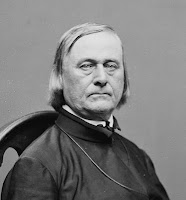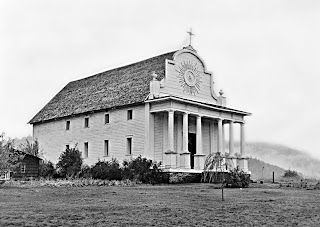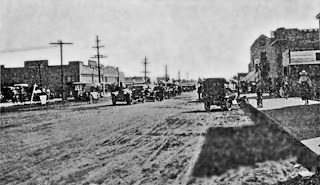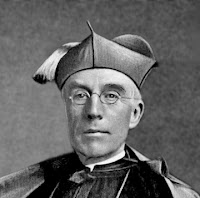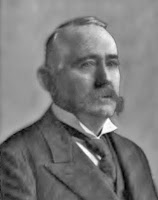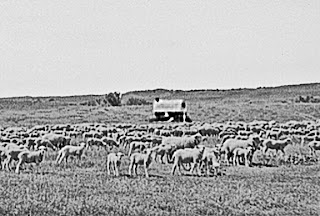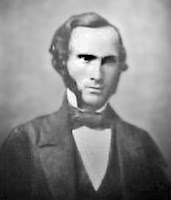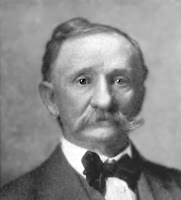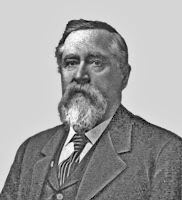 |
| "Doc” Rankin. H. T. French photo. |
William Allen “Doc” Rankin was born January 24, 1836, in Lafayette, Indiana. Several ancestors in his paternal line fought in the American Revolution, later being plantation owners in Virginia. Although Doc’s family moved to the Midwest (to Iowa after Indiana), they retained strong family ties to Virginia.
Thus, because his forebears were “old line” Virginians, the young man sympathized with the South during the Civil War. When the war began, Rankin was in Iowa farming and raising stock. In fact, he fit the demographic for one typical kind of “Copperhead” – "agrarians" with Southern roots. Copperheads were Northerners who opposed the war.
Rankin therefore began to procure horses and recruit like-minded men for the Southern forces. However, Iowa apparently became too “hot” for him in 1863, so he and five other men headed west. Along the way, they stopped at Fort Bridger, where Rankin made the first of many western acquaintances: old Jim Bridger himself.
After a winter in California, Doc entered the freighting business. He then “spent twelve years in driving his outfit across the deserts of the West and over pretty nearly all the trails that then led from one center of population to another.”
His draft animals and equipment wore down, of course, hauling heavy loads on primitive roads and over the rugged mountains. To avoid losing part of a freighting season, Rankin made time to recoup his outfit by spending several winters in California.
Rankin came to know “many of the ablest and most famous men of the West.” That included prominent politicians such as Brigham Young and George Hearst (later a U. S. Senator from California, and father of publisher William Randolph Hearst).
 |
| Freight outfit in the Sierras, ca 1866. Library of Congress. |
When Congress suspended coinage of silver dollars in 1873, miners decamped in droves from the silver mines of Nevada. Rankin’s freight business followed them to the gold fields of California, mainly in the Bodie area. Despite its rich and notorious reputation, the Bodie gold strikes proved short-lived, and rapidly tapered off after about 1880. His business declining, Doc moved to Boise in 1881.
For the next eight years, Rankin engaged in various enterprises to make a living. Thus, a year after he got there, the Idaho Statesman (March 18, 1882) thanked Doc for “a fine salmon trout. He brought in a load of fine fish Sunday, for which he found ready sale. He expects to be here again next week, after which he will visit this market once a week, if possible.”
Finally, in 1889, he took up a homestead two miles southwest of Boise. He remained there for the next quarter century. When H. T. French published his History in 1914, Doc’s biography said, “The street car line runs out Rankin street named in his honor, right past his door.”
Rankin took an active interest in the affairs of the Democratic Party in Idaho. However, he never ran for political office here, perhaps soured by an experience in Nevada, where he was reportedly “deprived of his rightful seat” in the legislature by election fraud. Still, in 1912, at the age of seventy-six, Doc was still serving as a precinct chairman for the party (Statesman, April 7, 1912).
When Old Doc passed away in 1917, the Idaho Statesman (December 16, 1917) said that during his years of traveling, “He came to be thoroughly familiar with the entire country, and was often referred to as an authority on road conditions of the West.”
References: [Brit], [French]

